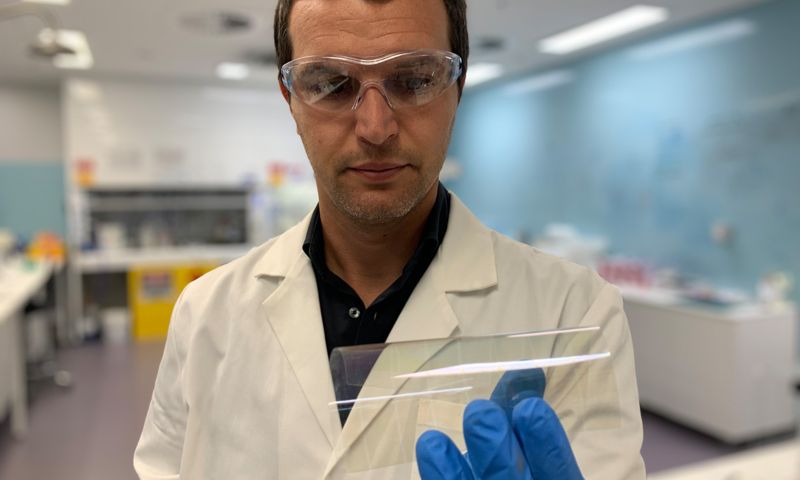Sky’s the limit with spray-on electronics
The zinc oxide nanocrystals can be formulated into ink and deposited as an ultra-thin coating. The process is like ink-jet printing or airbrush painting, but the coating is hundreds to thousands of times thinner than a conventional paint layer.
“These coatings can be made highly transparent to visible light, yet also highly electrically conductive – two fundamental characteristics needed for making touchscreen displays,” Della Gaspera said.
The nanocrystals can also be deposited at low temperature, allowing coatings on flexible substrates, such as plastic, that are resilient to flexing and bending, the team says.
The team is ready to work with industry to explore potential applications using their techniques to make these nanomaterial coatings.
What is zinc oxide and how can it be used?
Zinc is an abundant element in the Earth’s crust and more abundant than many other technologically relevant metals, including tin, nickel, lead, tungsten, copper and chromium.
“Zinc is cheap and widely used by various industries already, with global annual production in the millions of tonnes,” van Embden said.
Zinc oxide is an extensively studied material, with initial scientific studies being conducted from the beginning of the 20th century.
“Zinc oxide gained a lot of interest in the 1970s and 1980s due to progress in the semiconductor industry. And with the advent of nanotechnology and advancement in both syntheses and analysis techniques, zinc oxide has rapidly risen as one of the most important materials of this century”, Della Gaspera said.
Zinc oxide is also safe, biocompatible and found already in products such as sunscreens and cosmetics.
Potential applications, other than bendable electronics, that could use zinc oxide nanocrystals include:
- self-cleaning coatings
- antibacterial and antifungal agents
- sensors to detect ultraviolet radiation
- electronic components in solar cells and light emitting devices (LED)
- transistors, which are miniature components that control electrical signals and are the foundation of modern electronics
- sensors that could be used to detect harmful gases for residential, industrial and environmental applications.







